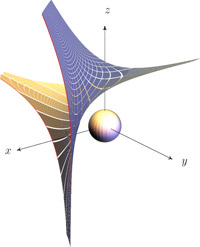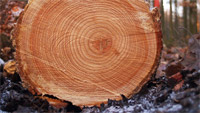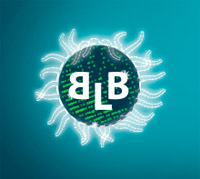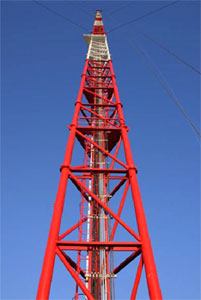Integral methods in complex analysis and algebraic geometry
 Krasnoyarsk Scientific School carrying out the multidimensional complex analyses was formed in 1965 under the direction of L. A. Aizenberg and A. P. Yuzhakov; the first one directed the integral representations for holomorphic functions and the second was at the head of the theory of multidimensional residues mentioned in the works of E. Martinelli and J.-P. Leray.
Krasnoyarsk Scientific School carrying out the multidimensional complex analyses was formed in 1965 under the direction of L. A. Aizenberg and A. P. Yuzhakov; the first one directed the integral representations for holomorphic functions and the second was at the head of the theory of multidimensional residues mentioned in the works of E. Martinelli and J.-P. Leray.
During the years of the school formation the basic principles of the theory of integral representations and deductions have been established, integrated methods were linked with algebraic and differential equations. These studies are reflected in monographs by L. A. Aizenberg and A. P. Yuzhakov; A. K. Tsikh; A. M. Kytmanov; N. N. Tarkhanov; L. S. Maergoiz.
Fundamental results were drawn in complex convexity, which were subsequently used and expanded to the developed theory in the monographs of Scandinavian mathematicians L. Hörmander; M. Andersson, M. Passare and R. Sigursson. The stability problem of two-dimensional digital recursive filters was also solved.
Scientific fields and research issues
It is widely known that one of the most popular of integral transformations — Fourier transform — plays an important role in the issue of showing the dualistic relations between the wave and the corpuscular theory of light. All the related integral transforms (by Laplace, Mellin, Cauchy and also much later Radon transform describing the principle of modern tomograph operating) have similar properties as, essentially, they are functionals in spaces of other functional objects defined on manifolds.
The effectiveness of integral transformations use is particularly evident within the complex analysis, where, due to the Cauchy-Poincare theorem, i. e. theory of residues, the possibility of exact or asymptotic computation of integrals is greatly enhanced. The theory of residues, which stands at the crossroads of complex analysis and algebraic geometry plays an important role in these maths fields and in their applications too: in the theory of commutative algebra duality, in the study of vector fields, differential and difference equations.
Traditionally, two approaches are mainly considered in the theory of multidimensional residues: homological (the theory of integration of closed differential forms over cycles) and stream-based (based on the integration of finite test forms).
Both approaches are based on two things: the first is the construction of residual nuclei issue, and the second is the issue of natural dual cycles to specified nuclei selection.
Dendroclimate and dendroecological monitoring of Northern Eurasia forests
 Goals and research focus:
Goals and research focus:
- expanding the existing network of dendroclimate monitoring stations in Northern Eurasia region and improving the methods of estimating the influence of climatic and non-climatic nature factors on the trees growth;
- using the indicative possibilities of tree rings for getting knowledge about the carbon exchange between vegetation and atmosphere.
Tasks
- Data collection and construction of long tree-ring chronologies in Western Siberia territory, Yakutia and Chita region, the north of Finland. Updating of existing chronologies and obtaining new ones of a thousand years long and more.
- Improving the statistical and imitation models of tree growth reaction to the local and regional climate changes.
- Spatial analysis of changes in the tree growth in different time intervals in the 20th and 21st centuries due to regional climate change at high latitudes.
- Improving the methods of statistical long tree-ring chronologies forecasting (MTM spectral decomposition, wavelet analysis, etc.) to isolate and estimate the cyclicities of different intensity in the growth of woody plants.
- Analysis of connections between long tree-ring chronologies of northern Eurasia and the indices of atmospheric circulation.
- Joint analysis of long growth changes, the compactness of tree rings, and the content of 13C and 18O isotopes as a tension indicators of physiological processes for carbon storage, and indirect indicators of climate change.
- Analysis of the seasonal dynamics of the ratio of carbon isotopes and the anatomical structure of annual rings of conifers in the north of Central Siberia and in the north of Sweden due to weather factors for the development of improved eco-physiological model of carbon dioxide accumulation in trees.
- Analysis of the climatic factors impact on the annual production of various components (trees, shrubs, mosses) for the quantitative assessment of current trends in northern ecosystems productivity changes.
Environmental biophysics
 Among the first academic scientific schools that were created in Krasnoyarsk and received the world recognition, the School of Environmental Biophysics was founded by the research of Professor Terskova and Professor Gitelzon, Acting member of the Russian Academy of Sciences. Subsequently it was developed by I. I. Gitelzon into modern school of Biophysics and Biotechnology of supraorganism systems.
Among the first academic scientific schools that were created in Krasnoyarsk and received the world recognition, the School of Environmental Biophysics was founded by the research of Professor Terskova and Professor Gitelzon, Acting member of the Russian Academy of Sciences. Subsequently it was developed by I. I. Gitelzon into modern school of Biophysics and Biotechnology of supraorganism systems.
Achievements and results
Methodology for the synthesis of closed ecological systems based on the developed biotechnology of biosynthesis parametric control in populations of microorganisms and plants was developed. It allowed developing «Bios», the first functioning closed ecosystem for human life support remaining unique. Nowadays the research is going on in collaboration with the European Space Agency.
The experimental model of a new generation Bioregenerative life support systems (BLSS) for deep space missions, based on a new approach to the repeating of matter cycle — the biological and physico-chemical «burning» of dead-end vegetable products, which provided BLSS increased resistance and cycle degree of isolation more than 95 % has been calculated and created.
The developed methodology is transferred to the study of nature ecosystems.
Based on the received fundamental knowledge of the mechanisms controlling the synthesis of polymeric macromolecules by bacteria hemoautotrophic a family of bioresorbable linear biopolymers with different chemical structures was synthesized, their basic physical and chemical properties were studied. A family of polymeric medical devices was received from polyalcanoates. A complex biomedical research was carried out, specifications were developed and registered by the Russian State Standard for three types of polymers: for heart vessels prosthetics, for growing cells scaffolds, and for a long deposit of medicines within a body.
The genes and protein structure of emitting ferments — luciferases of several species of animals have been decoded. Based on these research of luminescent ferments and their genes by genetic engineering and chemical synthesis highly sensitive bioluminescent labels for molecular diagnostics (immune-ferment analysis, thyroid and gonadotropic hormones, alpha-fetoprotein, hepatitis B and reagents for the quantitative analysis of PCR products) have been created.
Radio navigation and radar systems and devices
 Radio Engineering Scientific School was established in 1941.
Radio Engineering Scientific School was established in 1941.
It was originated by outstanding designers of radiotechnical systems: Member of the Russian Academy of Sciences A.A. Raspletin; Dr. of Technical Sciences, Professor G.F. Ignatiev; Dr. of Technical Sciences, Professor V. G. Taranenko; M. K. Chmykh — one of the greatest specialists in the field of digital measurement equipment, the organizer of the Research Institute of Radio Engineering of the Krasnoyarsk State Technical University, Head. Chair of «Radio-technical systems»; Dr. of Technical Sciences, Professor G. Y. Shaidurov.
Achievements and results
Under the leadership of candidate. tech. Sciences, Professor V.I. Kokorin basic theory and hardware and software were developed to create a domestic multi-function receiver-satellite-navigation systems (RNS) GLONASS, compatible with American GPS system.
The bases of the theory of goniometric radio navigation measurements of satellite RNS GLONASS — GPS, for the first time in Russia implemented in receivers of IRA-type were created.
Algorithmic and hardware and software for high-precision marine radar station in the UHF wave band and system in the medium-wave range were developed.
A wide variety of Research Laboratories and Centers give opportunities to do research for our faculty, students, postdoctoral fellows and visiting scientists.
Bioluminescent biotechnologies laboratory
Head of the Laboratory Valentina Kratasyuk
tel.: +7 (391) 206-20-72
e-mail: VKratasyuk [at] sfu-kras [dot] ru
web: biolum.sfu-kras.ru
 The laboratory was created under the direction of Nobel Prize winner professor Osamu Shimomura with the support of the Russian Federation Government.
The laboratory was created under the direction of Nobel Prize winner professor Osamu Shimomura with the support of the Russian Federation Government.
Goals and research focus
- The study molecular and cellular organization of different organisms’ bioluminescent systems.
- Development and implementation of highly effective methods for analytical use of bioluminescent phenomenon in biology, medical diagnostics and environment health monitoring.
- Development of academic programs based on bioluminescent phenomenon.
Achievements:
- General patterns and differences within the molecular mechanisms of coelenterazine-dependent bioluminescent proteins functioning.
- New data on the molecular-cellular organization and the behavior of luminescent higher fungi and annelids bioluminescent systems.
- Experimental physico-chemical models for studying ferment coupling chain functioning and mechanisms of ferments stabilization inside the cell and composite at the sample of the luminescent system of lumi-bacteria.
- Highly-effective bioluminiscent molecular diagnosticums, suitable for implementation in medical practice.
- Portative lab for samples toxicity determination.
- Lectures and practical courses on the molecular principles of bioluminescence and biolumi-based analytical systems and workshops on microbiology, biophysics and biochemistry using bioluminescence.
Laboratory of New Biomaterials Biotechnology
Head of the Laboratory Tatiana Volova
tel.: +7 (391) 206-21-56
Google Scholar: scholar.google.com/citations
 Goals and research focus: research, design and pilot production of the biodegradable material based on polymers of microbial origin.
Goals and research focus: research, design and pilot production of the biodegradable material based on polymers of microbial origin.
The Laboratory is a research and experiment base for studying convenient use of biodegradable PHAs polymers to develop new high-tech biomedical technologies.
Laboratory of Forest Genomics
Head of the Laboratory Konstantin Krutovsky
tel.: +7 (391) 290-52-44
web: genome.sfu-kras.ru
 The Laboratory was established at Siberian Federal University in Krasnoyarsk in April 2012 with the support from the Department of Genetics and Breeding of the Centre for Forest Protection in Krasnoyarsk Territory (Regional branch of the Russian Centre for Forest Protection at the Federal Forestry Agency) and the Laboratory of Forest Genetics and Breeding at the Institute of Forest Health (Siberian Branch of the Russian Academy of Sciences in Krasnoyarsk).
The Laboratory was established at Siberian Federal University in Krasnoyarsk in April 2012 with the support from the Department of Genetics and Breeding of the Centre for Forest Protection in Krasnoyarsk Territory (Regional branch of the Russian Centre for Forest Protection at the Federal Forestry Agency) and the Laboratory of Forest Genetics and Breeding at the Institute of Forest Health (Siberian Branch of the Russian Academy of Sciences in Krasnoyarsk).
Goals and research focus
The main objective of the project is the creation of new, competitive, modern, dynamic and well-equipped laboratory of Forest Genomics, integrated both in scientific and educational SibFU infrastructure, able to carry out modern scientific research including those stated in the framework of the full genome sequencing, comparative analysis and annotation of genomes in main forest-forming species of the Russian Federation — Siberian larch (Larix sibirica Ledeb.), Scots pine (Pinus sylvestris L.) and Siberian stone pine (Pinus sibirica, Du Tour.) and their most dangerous pathogens, primarily fungi belonging to the complexes Armillaria mellea s.l. and Heterobasidion annosum s.l., which cause catastrophic shrinking of Russian boreal forests aggravated by established decrease in precipitation and a simultaneous increase in surface air temperature in the physiologically important periods for woody plants , frequent in the last two decades and likely related to global climate change.
Laboratory of Ecosystem Biogeochemistry
Head of the Laboratory Alberto Arzak
tel.: +7 (391) 206-29-46
e-mail: aarzak [at] sfu-kras [dot] ru
Goals and research focus
The Laboratory carries out multidisciplinary research in the fields of geography of the economy, geoecology and nature management, ecology of biosystems and geoinformatics and geographic cartography: the data gained during many-year observations from the international tall tower facilities as a part of projects studying the dynamics of greenhouse gases in the atmosphere, the data from the satellite data receiving station of Institute of Forest Health (Siberian Branch of the Russian Academy of Sciences) and SibFU geoinformation system.
International Research Centre of Spectroscopy and Quantum Chemistry
Research Director: Sergey Polyutov
Research Supervisors: Faris Gel'mukhanov, Professor; Hans Agren, Professor
e-mail: SPolyutov [at] sfu-kras [dot] ru
web: inspeq.sfu-kras.ru
International Research Centre of Spectroscopy and Quantum Chemistry (IRC SQC) at Siberian Federal University (SibFU) was created on a base of Laboratory of Nonlinear Optics and Spectroscopy in 2021. The research topics explored by the Centre range from the developement of quantum chemistry methods and X-ray spectroscopy to nanoplasmonics, biophotonics and biomedicine. You may find all useful information about us, including our research and educational activity, research staff and hot events, as well as the announcements of open positions using navigation bar above.
Laboratory of Geomechanics and Geotechnology for the Development of Solid Mineral Deposits
Head of the Laboratory: Aleksandr Kosolapov
tel.: +7 (391) 206-38-35
e-mail: AKosolapov [at] sfu-kras [dot] ru
Goals and research focus
The laboratory participates in the implementation of the project on Research and justification of stable parameters of the sides of the open pit and its slopes for the exploitation of Gorevsky lead-zinc deposit under the protection of the dam of the II stage from the Angara river based on the generalization of available data. We study physical and mechanical properties of rocks and fracture formation in the sides of the open pit, dumps and their bases, obtained during the drilling of exploration wells with core sampling. The customer — Gorevsky Mining and Processing Plant.
Laboratory of Dispersed and Nanostructured Solid, Viscous and Colloidal Materials
Head of the Laboratory: Aleksandr Bezrukhikh
tel.: +7 (391) 206-36-95
e-mail: ABezrukikh [at] sfu-kras [dot] ru
web: icmim.sfu-kras.ru/node/1509
Research focus
- Molding materials
- Sand casting
- Inorganic chemistry
- Manufacture of light metals and alloys
Laboratory of Comprehensive Physical and Geographical Research
Head of the Laboratory: Daria Mekarchuk
tel.: +7 (391) 246-99-47
e-mail: DBolkunova [at] sfu-kras [dot] ru
Research focus
- Physical geography
- Geomorphology
- Soil science
- Land hydrology
- Meteorology
ZOTTO Station
Head of the Laboratory: Daria Mekarchuk
tel.: +7 (391) 246-99-47
e-mail: DBolkunova [at] sfu-kras [dot] ru
 The Zotino Tall Tower Observation Facility (ZOTTO) is a climatic research station in the Siberian taiga in the proximity of Zotino, Russia, established and operated by the Max Planck Society and the Sukachev Institute of Forest, it serves as a long-term observing platform to be operated for at least 30 years.
The Zotino Tall Tower Observation Facility (ZOTTO) is a climatic research station in the Siberian taiga in the proximity of Zotino, Russia, established and operated by the Max Planck Society and the Sukachev Institute of Forest, it serves as a long-term observing platform to be operated for at least 30 years.
Far from human influences, researchers aim to determine how the concentration of greenhouse gases, aerosols, and the rising temperatures of the terrestrial atmosphere affect each other mutually.
The heart of the station is a 304-metre-high (997 ft) tower on which precision instruments measure the concentration of carbon dioxide, methane and other greenhouse gases. The measurement data are processed directly in the station at the foot of the tower and then transferred to the Institute of Forest, in Krasnoyarsk, Russia, as well as to the Max Planck Institute for Biogeochemistry in Jena, Germany.
The station has been operational since September 2006. It extended the project Terrestrial Carbon Observing System and was funded by the 5th framework program of the European Union, uniting 8 European and 4 Russian partners. A main conclusion of the project is that Siberian forests constitute a substantially smaller carbon sink than so far assumed.
Educational and Research Centre for Comprehensive Studies of the Spatial Development of Regions
Head of the Laboratory: Svetlana Samusenko
tel.: +7 (391) 246-98-94
e-mail: SSamusenko [at] sfu-kras [dot] ru
Research focus
The Centre was established in 2015. Our main case study is regular observations and expert-analytical assessment of the problems of economic and spatial development of Krasnoyarsk Territory with the publication of a thematic bulletin. The project is a long-term applied research that began in 2014 and is carried out as part of the centre's regular thematic activities. The essence of the project is to carry out annual expert-analytical studies of some central topic relevant for the development of Krasnoyarsk Territory and its coverage in the annually published bulletin Economy of Krasnoyarsk Territory.

 Siberian Federal University
Siberian Federal University 
